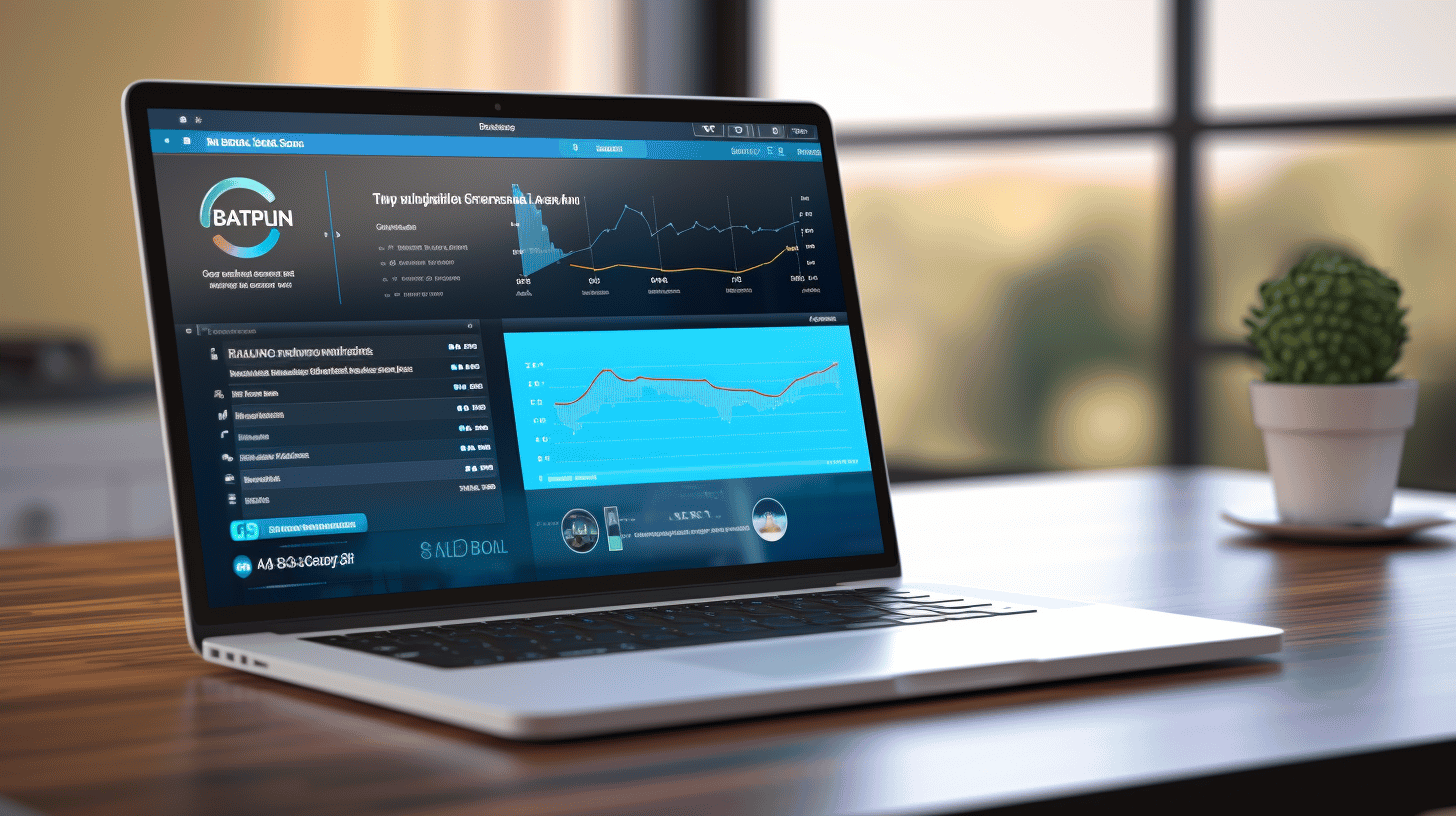在當今的數位環境中,維護 WordPress 網站的安全性比以往任何時候都更重要。隨著網路威脅的日益普遍以及網站漏洞的潛在影響,採取措施保護您的線上狀態至關重要。無論您的網站是個人部落格、電子商務商店還是公司網站,沒有人能夠免受線上世界營運所帶來的風險。
WordPress 是全球最受歡迎的內容管理系統 (CMS) 之一,也是駭客的主要目標。其廣泛的用戶群和龐大的插件生態系統使其對網路犯罪分子來說既脆弱又具有吸引力。因此,實施強大的安全措施來保護您的網站、資料和使用者資訊至關重要。
在本文中,我們將探討各種技術和最佳實踐來加強您的 WordPress 網站的安全性。我們將介紹您可以實施的基本和進階措施,以增強您網站的保護。此外,我們將討論如何應對安全漏洞、在網站受到攻擊時恢復網站以及如何防止未來的攻擊。
透過遵循這些 WordPress 安全技術和指南,您可以最大限度地降低未經授權的存取、資料外洩以及對您的線上聲譽的潛在損害的風險。那麼,讓我們深入研究並掌握保護您的 WordPress 網站安全的藝術吧!
快速提示: 您是否知道 2019 年被駭客入侵的網站中有 90% 都是由 WordPress 提供支援的?採取主動措施保護您的網站並確保其安全至關重要。
WordPress 安全的重要性
在當今的數位時代,擁有一個安全的網站至關重要。隨著網路威脅和惡意攻擊的不斷增加,保護您的 WordPress 網站比以往任何時候都更加重要。網站安全漏洞可能造成嚴重後果,包括資料竊取、失去客戶信任,甚至財務損失。了解所涉及的風險以及網站漏洞可能對您的業務造成的影響至關重要。
了解風險
WordPress 是一種受歡迎的內容管理系統 (CMS),全球有數百萬個網站在使用。雖然它的受歡迎程度源於其用戶友好的介面和強大的功能,但它也使其成為網路犯罪分子的主要目標。以下是與不安全的 WordPress 網站相關的一些風險:
- 惡意軟體感染:不安全的 WordPress 網站很容易感染惡意軟體,這可能導致網站功能中斷、資料遺失並損害您的企業聲譽。
- 暴力攻擊:網路犯罪分子可以使用自動化工具發動暴力攻擊,試圖猜測您網站的登入憑證。一旦他們獲得未經授權的存取權限,他們就會對您的網站造成嚴重破壞。
- 外掛和主題中的漏洞:外掛和主題是 WordPress 網站的基本組件,可增加額外的功能和設計。然而,如果不及時更新,它們可能會成為安全漏洞,可能會被駭客利用。
- 資料外洩:網站通常儲存敏感數據,包括客戶資訊和財務詳細資訊。您的 WordPress 網站安全漏洞可能導致資料被盜或洩露,從而產生法律後果並損害您的聲譽。
了解這些風險對於採取主動措施保護您的 WordPress 網站並防止潛在的漏洞至關重要。
網站外洩的影響
網站漏洞的後果可能是深遠的,並且會對您的企業和客戶造成毀滅性的打擊。以下是一些潛在影響:
- 失去客戶信任:如果您的網站出現安全漏洞,客戶可能會失去對您的品牌的信任。他們可能不願意提供個人資訊或使用您的服務,從而損害您的聲譽並影響您的底線。
- 財務損失:網站受到攻擊可能會因停機、恢復成本、銷售損失以及潛在的法律後果而造成經濟損失。其財務影響可能非常巨大,特別是對於小型企業或電子商務網站而言。
- SEO處罰:搜尋引擎在排名中優先考慮安全的網站。如果您的 WordPress 網站遭到入侵並被標記為不安全,則會對您的搜尋引擎排名產生負面影響,導致自然流量和可見度下降。
- 聲譽損害:在當今互聯互通的世界,網站入侵的消息可以透過社群媒體和線上論壇迅速傳播。由此造成的聲譽損害可能難以恢復,並可能損害您企業的長期成長和成功。
主動投資 WordPress 安全措施可以幫助減輕這些風險並保護您的線上資產。透過實施強大的安全措施、及時更新軟體、使用強密碼以及定期備份您的網站,您可以確保您和您的訪客獲得更安全的線上體驗。
了解 WordPress 線上安全 如果您的 WordPress 網站沒有得到妥善保護,則會提供無價的證明,說明潛在的危險。
WordPress 基本安全措施
🔒 保護您的 WordPress 網站應該是首要任務。隨著網路威脅的數量日益增加,採取主動措施保護您的網站及其保存的敏感資料至關重要。在本文中,我們將探討一些基本的 WordPress 安全措施,這些措施將有助於強化您的網站並保護其免受潛在的攻擊。讓我們開始吧!
強密碼
🔐 強密碼是防止未經授權存取您的 WordPress 網站的第一道防線。以下是創建強密碼的一些技巧:
- 使用大寫和小寫字母、數字和符號的組合。
- 密碼長度至少為 8 個字元。
- 避免使用常用字、個人資訊或連續數字。
- 考慮使用密碼管理工具來安全地產生和儲存複雜的密碼。
請記住,您的密碼是您網站安全的關鍵。遵循這些準則,您可以大幅降低未經授權存取您的 WordPress 管理區域的風險。
定期更新
🔄 保持 WordPress 安裝、主題和外掛程式為最新版本對於維護網站安全至關重要。更新通常包括錯誤修復、安全性修補程式和有助於解決漏洞的效能改進。定期更新至關重要的原因如下:
- 更新修補了安全漏洞,使駭客更難利用您的網站。
- 它們確保與最新版本的 WordPress 和其他外掛程式相容。
- 它們可以提高您網站的整體效能和功能。
為了隨時了解更新,請盡可能啟用 WordPress 核心、主題和外掛的自動更新。定期檢查更新並及時安裝,以確保您的網站安全且順利運作。
限制登入嘗試
🚫 限制登入嘗試是防止對 WordPress 網站進行暴力攻擊的有效方法。暴力攻擊涉及駭客嘗試多種密碼組合,直到找到正確的密碼組合。透過限制登入嘗試,您可以阻止這些惡意嘗試。您可以按照以下方式操作:
- 安裝「限制登入嘗試次數」之類的插件來限制來自單一 IP 位址的登入嘗試次數。
- 在 IP 位址被暫時封鎖之前,設定合理的登入嘗試次數限制(例如 5)。
- 考慮實施雙重認證以增加一層安全性。
透過限制登入嘗試,您可以顯著降低未經授權存取您的 WordPress 管理區域的風險。
🔗 了解有關 WordPress 安全措施的更多信息 以及如何保護您的網上商店免受潛在威脅。
請記住,實施這些基本的安全措施只是保護您的 WordPress 網站的開始。保持警惕,保持外掛和主題更新,並遵循最佳實踐以確保最佳安全性。不要損害您的網站及其所保存的寶貴資料的安全性。今天就確保安全並讓自己安心。
高級 WordPress 安全技術
WordPress 是世界上最受歡迎的內容管理系統 (CMS) 之一,為數百萬個網站提供支援。然而,它的受歡迎程度也使其成為駭客和惡意攻擊的主要目標。為了確保您的 WordPress 網站的安全,實施先進的安全技術至關重要。在本文中,我們將探討三種有效的技術:雙重認證、安全性外掛程式和自訂登入 URL。
雙重身份驗證
雙重認證 (2FA) 是額外的安全層,為登入過程增加了一個額外的步驟。它要求使用者提供兩部分證據來驗證他們的身份:他們知道的東西(密碼)和他們擁有的東西(認證碼)。工作原理如下:
- 使用者在登入頁面輸入使用者名稱和密碼。
- 登入成功後,驗證碼將發送到其註冊的行動裝置或電子郵件。
- 使用者輸入代碼即可存取 WordPress 儀表板。
實施 2FA 可顯著降低未經授權存取您的 WordPress 網站的風險。它透過要求實體擁有身份驗證設備來增加額外的安全性等級。 WordPress 外掛程式庫中有多個 2FA 外掛程式可供您安裝和配置,以保護您的網站安全。
安全插件
安全外掛對於保護您的 WordPress 網站免受各種威脅(包括惡意軟體、暴力攻擊和漏洞)至關重要。它們透過主動監控您網站的安全性並阻止可疑活動來提供額外的防禦層。一些流行的安全插件包括:
- 字柵欄
- 惡意護理
- 蘇庫里安全
這些插件提供廣泛的功能,例如防火牆保護、惡意軟體掃描、登入安全性等。它們可以檢測並阻止惡意流量,通知您任何安全問題,甚至在網站遭到駭客攻擊時幫助您恢復。選擇適合您需求的安全性外掛程式並定期更新以從最新的安全性增強功能中受益非常重要。
自訂登入 URL
更改 WordPress 網站的預設登入 URL 可以增加額外的安全性。預設情況下,WordPress 網站的登入頁面透過「wp-login.php」或「wp-admin」URL 訪問,這些 URL 是攻擊者所熟知的。更改登入 URL 會使駭客更難找到登入頁面並發動暴力攻擊。您可以按照以下方式操作:
- 安裝安全插件,如“WPS Hide Login”或“iThemes Security”。
- 導航至外掛程式設定並將登入 URL 變更為您選擇的自訂 URL。
- 儲存變更並測試新的登入 URL 以確保其正常運作。
透過自訂登入 URL,您可以降低針對預設登入頁面的自動攻擊的風險。它增加了一層額外的隱藏性,使惡意行為者更難以未經授權存取您的網站。
總而言之,實施先進的安全技術對於保護您的 WordPress 網站免受潛在攻擊至關重要。雙重驗證增加了額外的驗證層,安全插件可以主動監控和防禦威脅,自訂登入 URL 可以降低暴力攻擊的風險。透過結合這些技術,您可以顯著增強 WordPress 網站的安全性並確保線上安全。
WordPress 安全最佳實踐
確保您的 WordPress 網站的安全至關重要。隨著網路威脅和攻擊變得越來越複雜,實施 WordPress 安全最佳實踐對於保護您的網站和資料至關重要。在本文中,我們將探討增強 WordPress 安全性的三種關鍵做法:定期備份、使用 SSL 憑證和最小特權原則。
定期備份
🔒定期備份您的 WordPress 網站是防範潛在安全漏洞或資料遺失的第一道防線。備份您的網站檔案和資料庫可讓您在發生任何不可預見的事件時將您的網站還原到先前的狀態。以下是一些值得考慮的最佳做法:
- 自動備份:利用 UpdraftPlus 或 BackupBuddy 等外掛程式自動執行備份過程並確保無需人工幹預即可進行定期備份。
- 將備份儲存在異地:將您的備份儲存在單獨的伺服器或雲端儲存服務(如 Dropbox 或 Google Drive)上。將備份儲存在異地可以增加一層額外的安全性,即使您的伺服器受到威脅也能保護您的網站資料。
- 測試您的備份:透過將備份還原到測試環境來定期測試它們。這有助於驗證備份策略的完整性和有效性。
SSL 憑證的使用
🔒 實施 SSL(安全通訊端層)憑證對於保護您的 WordPress 網站至關重要,特別是在您處理敏感使用者資訊或處理線上交易時。 SSL 憑證提供加密,確保使用者瀏覽器和您的網站之間傳輸的資料保持安全。使用 SSL 憑證時請考慮以下做法:
- 取得受信任的 SSL 憑證:確保從受信任的憑證授權單位 (CA) 取得證書,因為這可以保證您的網站訪客的瀏覽器能夠識別並信任您的 SSL 憑證。
- 強制您的網站使用 HTTPS:將所有傳入流量重新導向到您網站的安全 HTTPS 版本,以確保傳輸的所有資訊都已加密。
- 及時更新 SSL 憑證:SSL 憑證有一個有效期限。設定提醒,在 SSL 憑證過期之前進行更新,以避免安全連線中斷。
最小特權原則
🔒 實施「最小特權原則」是增強 WordPress 安全性的另一個關鍵實踐。此原則僅限於將使用者存取和權限限制在必要的範圍內。遵循此原則,您可以最大限度地降低未經授權存取的風險並減少帳戶被盜造成的潛在損害。請考慮以下準則:
- 建立具有特定權限的使用者角色:根據使用者的職責定義使用者角色並相應地授予他們必要的權限。 WordPress 提供預定義角色,如管理員、編輯、作者、貢獻者和訂閱者,以幫助您有效地管理使用者存取。
- 定期檢討並撤銷不必要的權限:定期審查使用者帳戶並撤銷任何不必要的權限。這可確保使用者只能存取他們需要的資訊,從而降低敏感資訊落入不當之手的風險。
- 強密碼和雙重認證:鼓勵使用者建立強密碼並啟用雙重認證 (2FA) 以增加安全性。雙重驗證要求用戶提供額外的身份驗證因素,例如發送到其行動裝置的唯一代碼,以存取他們的 WordPress 帳戶。
透過遵循這些 WordPress 安全最佳實踐,您可以顯著增強您的網站和資料的保護。定期備份、SSL 憑證和實施最小特權原則是保護您的 WordPress 網站免受潛在威脅的關鍵步驟。實施這些做法,您就可以高枕無憂,因為您知道您的 WordPress 網站是安全的。
應對安全漏洞
在當今數位時代,安全漏洞已成為個人和企業關注的重大議題。處理安全漏洞可能會讓人既緊張又不知所措。然而,採取正確的措施應對違規行為對於最大限度地減少損害和保護您的敏感資料至關重要。本文將引導您完成對安全漏洞的反應流程,重點介紹立即採取的步驟、網站恢復以及防止未來的攻擊。
立即採取的措施:迅速有效地採取行動🚨
當發生安全漏洞時,時間至關重要。立即採取行動可以幫助減輕影響並減少進一步的損害。以下是需要立即採取的一些關鍵步驟:
- 評估情況: 確定違規的範圍和嚴重程度。識別受影響的系統、受損的數據和潛在的漏洞。
- 遏止違規行為: 將受影響的系統與網路的其餘部分隔離,以防止漏洞進一步蔓延。這可能包括斷開受感染的設備或關閉受感染的伺服器。
- 告知關鍵利害關係人: 通知相關方,例如管理層、IT 人員和法律顧問。透明度是有效管理安全事件的關鍵。
- 保留證據: 記錄並保存違規證據,以供法醫分析和潛在的法律訴訟。這可能包括日誌、螢幕截圖或其他相關資訊。
- 實施臨時保障措施: 修補已知漏洞、更改密碼並加強安全控制,以確保攻擊者不能再次利用相同的弱點。
恢復網站:恢復正常狀態
一旦初步做出反應,就該集中精力恢復您的網站並恢復全部功能。以下是讓您的網站恢復運作的基本步驟:
- 評估損失: 確定損壞的程度,包括受損的資料、損壞的網頁或未經授權的存取。該評估將指導您的恢復工作。
- 清理受感染的文件: 刪除注入到您網站的任何惡意程式碼或檔案。確保修補所有已知漏洞以防止再次感染。
- 從備份還原: 如果可用,請從先前版本的乾淨備份還原您的網站。確保備份不受損害,以避免再次引入任何漏洞。
- 驗證完整性: 徹底測試您的網站,以確保所有功能均已恢復且不存在後門或隱藏的漏洞。進行定期安全掃描以識別任何潛在問題。
- 與用戶溝通: 讓您的用戶了解該事件,並讓他們知道您為解決違規行為已採取哪些措施。為他們可能需要採取的任何行動提供指導,例如更新密碼。
預防未來攻擊:加強防禦
從安全漏洞中學習對於防止將來發生類似事件至關重要。採取必要措施增強您網站的安全態勢並防範未來的攻擊:
- 執行徹底的安全審計: 全面檢視您網站的安全措施,包括其架構、存取控制、軟體版本和第三方整合。識別任何潛在的漏洞或弱點。
- 實施最佳安全做法: 使用強密碼,啟用雙重認證,並保持您的網站和所有相關軟體為最新版本。定期對員工進行網路安全意識和安全運算實務培訓。
- 監視可疑活動: 實施強大的安全監控系統,可以偵測並警告您網站上的任何異常或可疑行為。定期檢查日誌和報告以查找受損跡象。
- 運用專業知識: 考慮聘請網路安全專家或與託管安全服務提供者合作來評估和管理您網站的安全性。他們可以幫助識別潛在風險並實施有效的安全措施。
- 隨時了解新出現的威脅: 了解最新的安全趨勢、漏洞和攻擊技術。訂閱可靠的安全新聞通訊,關注行業博客,並參與相關論壇以隨時了解最新資訊並保持主動。
透過遵循這些立即的步驟,恢復您的網站並實施預防措施,您可以最大限度地減少安全漏洞的影響並保護您寶貴的資料。請記住,有效應對違規行為需要迅速採取行動、技術專長和持續警惕。
維護長期安全
在當今的數位環境中,維護長期安全對於個人和企業都至關重要。網路威脅不斷演變,因此必須領先一步來保護敏感資料並防止潛在的違規行為。為實現這一目標,可以實施幾項關鍵措施,包括定期安全審計、持續監控和持續教育。
定期安全審核
定期安全審計對於評估現有安全措施的有效性以及發現任何漏洞或弱點至關重要。這些審計涉及對安全協議、系統和基礎設施的全面審查,以確保它們符合行業標準和最佳實踐。透過定期進行這些審核,組織可以主動解決任何潛在的安全漏洞並採取必要措施來降低風險。
在安全審計期間,應評估以下領域:
- 網路基礎設施和硬體:包括路由器、交換器、防火牆和連接到網路的其他設備。審計員將審查配置並確保安全措施正確實施。
- 軟體和應用程式:評估軟體和應用程式的安全性至關重要,因為這些領域的漏洞可能會使系統容易受到攻擊。審計員將評估程式碼、審查安全性修補程式並檢查是否有任何過時的軟體。
- 資料儲存和存取控制:審計員將檢查組織內資料的儲存和存取方式。這包括審查加密方法、使用者存取等級和資料備份流程。
- 員工安全意識:評估員工的意識和對安全協議的遵守至關重要。審計員可能會進行訪談,測試員工對安全實務的了解,並找出需要改進的領域。
透過定期進行安全審計,組織可以在潛在風險和漏洞被惡意行為者利用之前識別並解決它們。
持續監控
維護長期安全需要持續監控網路、系統和應用程式。威脅可能隨時出現,因此即時了解任何可疑活動或異常至關重要。持續監控使組織能夠及時發現和應對安全事件,減輕潛在損害並最大限度地減少停機時間。
持續監測的關鍵領域包括:
- 網路流量:監控網路流量使組織能夠偵測任何未經授權的系統存取嘗試或異常的資料傳輸。入侵偵測系統 (IDS) 和入侵防禦系統 (IPS) 可以提供即時警報並有助於阻止惡意活動。
- 系統日誌和事件監控:監控系統日誌和事件可以提供對系統活動的寶貴見解,並偵測任何異常行為或安全事件。日誌管理工具和安全資訊和事件管理 (SIEM) 系統可以協助分析日誌和產生警報。
- 使用者行為分析:監控使用者行為有助於偵測內部威脅或受損帳號。透過分析使用者活動中的模式和異常,組織可以識別任何可疑行為並採取適當的措施。
透過持續監控,組織可以主動識別安全事件並迅速做出反應以降低潛在風險。
持續教育
投資持續教育對於維護長期安全至關重要。網路攻擊者不斷尋找利用漏洞的新方法,因此個人和組織需要隨時了解最新的安全威脅和最佳實踐。透過倡導安全意識文化,組織可以使員工成為抵禦潛在威脅的第一道防線。
繼續教育的關鍵面向包括:
- 安全培訓和意識計劃:定期對員工進行安全最佳實踐培訓並提高對潛在風險的認識可以顯著降低成功攻擊的可能性。培訓應涵蓋密碼衛生、網路釣魚意識和社會工程策略等主題。
- 了解最新的安全新聞和趨勢:隨時了解最新的安全新聞和趨勢至關重要。這可以透過訂閱行業新聞通訊、關注安全部落格以及參加網路研討會或會議來實現。
- 鼓勵通報可疑活動:應鼓勵員工及時通報任何可疑活動或潛在的安全事件。建立清晰的報告流程可確保迅速處理事件。
透過投資持續教育和培養安全意識文化,組織可以增強其整體安全態勢並降低成功攻擊的可能性。
總之,維護長期安全需要採取積極主動的方法,包括定期安全審計、持續監控和持續教育。透過實施這些實踐,個人和組織可以建立一個隨著不斷變化的網路威脅而發展的強大的安全框架。請繼續關注以了解有關安全數位環境的這些基本組件的更多資訊。 🔒
結論
總而言之,保護您的 WordPress 網站對於保護您的寶貴資料和維護訪客的信任至關重要。透過實施基本和進階安全措施、遵循最佳實務並及時應對安全漏洞,您可以加強網站抵禦潛在威脅。
請記住定期更新您的 WordPress 核心、主題和插件,並使用強密碼並限制登入嘗試次數,以最大限度地降低未經授權存取的風險。考慮實施雙重認證、使用安全性外掛程式並自訂登入 URL,以進一步增強您網站的安全性。
維護長期安全需要持續的努力,例如定期的安全審計、持續的監控以及隨時了解新出現的威脅。透過保持積極主動和警惕,您可以確保您的 WordPress 網站的長期保護。
如果您需要協助管理 WordPress 安全性並確保持續保護,請考慮利用 託管WP。 Managed-WP 擁有優質的 WordPress 雲端託管平台、專業的 24/7/365 WordPress 支援、備份管理和主動監控,讓您安心並自由地專注於您的數位體驗。
常見問題解答
- 有哪些有效的技術可以增強 WordPress 的安全性?
增強 WordPress 安全性的一些有效技術包括:保持 WordPress 安裝、主題和外掛更新;使用強大且獨特的密碼;定期備份您的網站;啟用雙重認證;使用安全插件;限制登入嘗試;並保護您的伺服器。
- 為什麼 WordPress 安全很重要?
WordPress 安全性非常重要,因為它有助於保護您的網站免受駭客攻擊、資料外洩、惡意軟體感染和其他網路威脅。安全的網站可以與訪客建立信任並確保資料的完整性和機密性。
- 推薦 WordPress 的哪個安全性外掛?
WordPress 有幾種知名的安全插件,包括 Wordfence、Sucuri Security、iThemes Security 和 All In One WP Security & Firewall。建議根據您的特定需求和要求選擇安全插件。
- 如果我的 WordPress 網站遭到駭客攻擊,我該怎麼辦?
如果您的 WordPress 網站遭到駭客攻擊,您應該立即採取措施恢復它。首先斷開您的網站與互聯網的連接,然後識別並刪除任何惡意檔案或程式碼。更改所有密碼,更新您的 WordPress 安裝,並安裝安全性外掛程式以防止未來的攻擊。
- 我可以只依靠安全插件來保護我的 WordPress 網站嗎?
雖然安全外掛是增強 WordPress 安全性的重要工具,但僅靠它是不夠的。除了使用安全插件之外,遵循最佳安全實踐至關重要,例如保持您的網站和插件更新、使用強密碼以及定期備份您的資料。



















